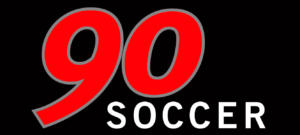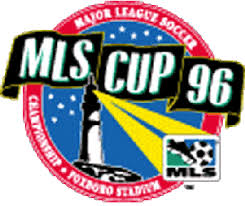How Garber transformed the league after a challenging start
The creation and launch of MLS in 1996 was undoubtedly a milestone in the history of American soccer. Who would have thought that 30 years later the league would reach the heights of baseball or even basketball’s popularity? Don Garber definitely believed in that unprofitable (for years) but hopeful project, from the very beginning.
Garber has been the commissioner of Major League Soccer since 1999 replacing Doug Logan who previously served in the role. During Logan’s last year at MLS, the league reportedly lost $34 million, bringing the tally to an overall $250 million loss in the first five years under Logan. But, Garber gradually managed to turn the tide.
Within 15 years under Garber, the average attendance was risen from a low of 13,756 to a record 19,151 in 2014 and followed by an eight-year, $720 million deal with Fox Sports, ESPN and Univision. The league went from having one soccer-specific stadium to 14, while expansion fees for new teams skyrocketed from $5 million to $110 million. Now, MLS not only features 30 teams, twenty more than the original 10 back in 1996, but 3 of them are located in Canada. A major expansion, just like in NBA 30 years ago.
Garber’s key changes and milestones
The reorganization of the MLS was top priority for Garber. Some notable moments after 1999 were:
• Changing league rules: Within months of taking over as commissioner in 1999, Garber dropped the postgame shootout that was being used to break ties and got rid of the countdown clock that was being used to time games.
• Soccer-specific stadiums: While the NASL never left any infrastructure in terms of soccer-specific stadiums, MLS made it a priority beginning with stadiums for Columbus (in 1998) and LA (in 2003) and many more followed.
• MLS’ relationship with U.S. Soccer: The ties between MLS and the U.S. Soccer Federation became stronger, as the governing body made commitments on the commercial side in order to promote the league and the sport.
• Landon Donovan chose MLS: After not establishing himself in Germany, then young U.S. star Donovan, moved to MLS on loan in 2001 and ended up staying in the league, becoming its all-time leader in goals and assists upon his retirement. Undoubtedly, one of the key decisions in the success of the league.
• Pay TV deals in 2007: The deals with ESPN and Univision ensured that MLS would start receiving a rights fee for its games.
• The Beckham Rule in 2007: Tim Leiweke’s push to sign David Beckham for LA led to the creation of the Designated Player rule, aka the Beckham Rule, under which the first player to sign a big-money contract was Beckham himself. Subsequently, MLS went on from one Designated Player in 2007 to 40-plus today, helping the league grow.
• Youth development: MLS academies are a work in progress, but they are considered a key development in the league with numerous homegrown players signed by MLS.
• Expansion to Canada: Toronto (2007) has been joined by Vancouver (2011) and Montreal (2012), converting MLS to a North American league just like NASL, with Canadian teams known for having passionate owners and fanbases.
• Small-market success: MLS expanded to smaller cities with soccer-hungry crowd i.e. Kansas City and Real Salt Lake and success was instant.
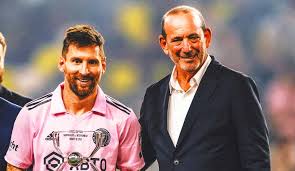
A long way from the 1970s to 1996
In 1975, it was the first time, that Sports Illustrated had featured soccer on its cover. Not surprisingly, though. It was NASL’s era and Pele, who had just signed a $5-million contract to play for the New York Cosmos featured on the magazine’s front cover. The wording said simply: “Pele’s Triumphant Debut” and “U.S. Soccer Finds a Savior.”
North American Soccer League was struggling at the time. Soon everything changed: Beckenbauer, Cruyff, Chinaglia, Best came in and the league was flooded by world-class super stars. The 1984 season was the last in the history of NASL which rose from 4 teams in 1971 to 24 in 1980.
MLS was planned to start in 1995. But it did not go as planned. The league’s decision to delay its launch from the spring of 1995 until 1996 was widely criticized at the time. On April 6, 1996, the hope officially returned to the fans of the sport in America. San Jose Clash forward Eric Wynalda scored the first goal in MLS history in a 1-0 win against DC United, and the glory days of the 1970s and 1980s seemed to be coming back.
Wynalda, the former San Diego State striker in January 1996, soon became the U.S. national team’s all-time leading goal scorer, and will forever be remembered as the first scorer in the history of MLS. A league with different traits to the one that conquered America for almost two decades.
NASL’s success and legacy
The foreign-dominated league flourished for a few more years after Pele’s arrival and then sank into oblivion. The NASL imported foreign stars by the dozen and, for a while, attracted crowds of 70,000-plus. Then, almost inexplicably, it withered and died out. However, its legacy lived on in MLS upon the latter’s launch. For instance:
–Alan Rothenberg, president of the U.S. Soccer Federation and chairman of MLS, was once a part owner of the NASL’s Los Angeles Aztecs.
–Eight of the 10 MLS coaches played or coached in the NASL. The only exceptions were D.C. United Coach Bruce Arena, who was also coach of the U.S. Olympic team, and New England Revolution Coach Frank Stapleton.
–Lamar Hunt, owner of the league’s Columbus and Kansas City franchises, used to own the NASL’s Dallas Tornado.
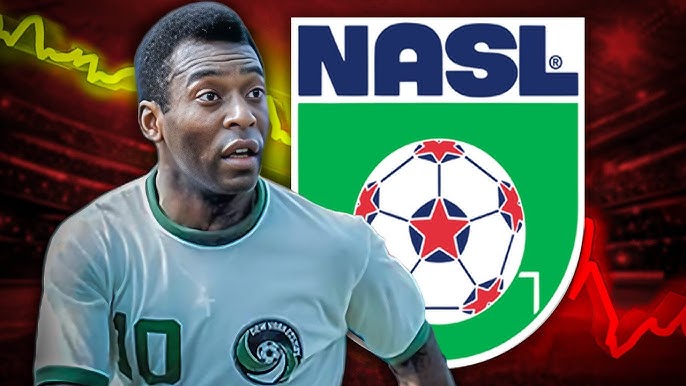
MLS players linked to NASL
Surprisingly, considering the time that had passed, there were even player connections to the old league: Mexican legend and 5-time La Liga’s leading scorer Hugo Sanchez, signed with the Dallas Burn in 1996. But, Sanchez already had played for the NASL’s San Diego Sockers as a teenager in the 1979 and 1980 seasons.
U.S. forward Roy Wegerle of the Colorado Rapids was NASL rookie of the year in 1984 while with the Tampa Bay Rowdies. D.C. United midfield John Harkes, as a youngster growing up in Kearney, N.J., Harkes and his pals, midfielder Tab Ramos and goalkeeper Tony Meola, used to go to Giants Stadium, to watch Pele!
Therefore, MLS roots could be found deep into the NASL, but comparisons between the leagues would have been misleading. NASL, a league of mercenaries, had a bunch of foreign players that the American public didn’t relate to (other than the superstars) and a few American players. The community spirit was missing. MLS was different in its beginning: only 4 marquee players and not necessarily all foreigners.
More than 75% of the league’s players in 1996 were American and included most of the members of the U.S. national and Olympic teams.
Financial and cultural differences between the two leagues
The league’s first salary cap was $1.13 million per team and a maximum $192.500 salary for a player while there was an equal distribution of top U.S. and foreign players among the 10 teams. The aim was a real competitive balance. However, there were rumblings of discontent about some teams being more ‘’equal’’ than others.
In NASL days, there was the NY Cosmos and then the rest, a key reason the league failed. But, despite NASL’s ultimate failure and demise the seed had been planted: young boys who started playing in the 1970s had Pele or Cruyff as idols and some of them became pros by the time that MLS was launched. While fans of NASL wanted to watch Pele, Best or Beckenbauer, MLS had plenty of U.S. internationals in 1996, already well known and established following the 1994 World Cup.
Another parameter when it comes to cultural was the huge influx from Latin American immigrants in the U.S. since the very early 1980s. By 1996 there were 30 million Hispanics in the States with a strong soccer culture and this amount did not exist during NASL years. And that was why in its search for foreign talent to play alongside the Americans, MLS had concentrated much of its effort in Central and South America, back in the 1990s.
As a result some of the hottest players from Latin America, such as Mexico’s Jorge Campos, Colombia’s Carlos Valderrama and Leonel Alvarez, Bolivia’s Marco Etcheverry, El Salvador’s Raul Diaz Arce and Mauricio Cienfuegos, Uruguay’s Adrian Paz, Ecuador’s Eduardo Hurtado and Guatemala’s Jorge Rodas joined MLS for the 1996 season.
MLS also turned to Africa for talent, signing a few stars and up-and-coming players from South Africa, Nigeria, Cameroon, Morocco and Zimbabwe. While the best European player acquired was two-time World Cup veteran Roberto Donadoni of AC Milan and Italy, the league’s number one marquee player.
But, would MLS exist and get off the ground had the team USA not qualified for the 1990 tournament in Italy and staged World Cup ’94? Possibly not, given that FIFA set the creation of an American pro league as a prerequisite for the Federation to get the 1994 World Cup.
The USA World Cup in 1994 accomplished two major things: It showed potential investors and sponsors that soccer could be a viable product in the United States and it made recognizable names of America’s leading players. Internationals like Alexi Lalas appeared on “The Tonight Show” with Jay Leno tonight, the same month he featured on the cover of London’s “World Soccer” magazine.
MLS’ aim upon its creation was to be right below the level of the Italian Serie A or the German Bundesliga or the Spanish first division or the English Premier League and as good as the Mexican first division, and the Dutch League. A trough and ambitious task, but the league managed to grow tremendously over the years.
NASL and 1996 MLS comparison
*Longevity: NASL 1968-1984; MLS 1996-present
*Number of teams at peak: NASL 24; MLS 30.
*Marquee player: NASL Pele (Brazil); MLS Roberto Donadoni (Italy).
*Original Salary cap: NASL none; MLS $1.13 million per team (1996).
*Original maximum annual salary: NASL $1.5 million (estimate); MLS $200,000 (estimate).
*TV rights: NASL CBS (major games); MLS ESPN, ESPN2, Univision, ABC (championship final).
*Season ticket sales and attendance: NASL best attendance was New York Cosmos in 1977; MLS leader in season ticket sales for 1996 was Columbus Crew with 8,921 sold as of March 25, 1996.
* Largest crowd: NASL 77,691 (New York Cosmos vs. Fort Lauderdale Strikers, 1977); MLS 31,000 (estimated) San Jose Clash vs. Washington D.C. United, 1996.
* Maximum number of foreign players on field (per team): NASL 10; MLS 3.
Inaugural MLS season
*Chairman: Alan I. Rothenberg.
*Commissioner: Douglas G. Logan.
*Principal investors: John Kluge and Stuart Subotnick; Robert Kraft, Lamar Hunt, Philip F. Anschutz, Marc Rapaport.
*Major commercial affiliates: AT&T;, Anheuser-Busch, Fuji, Honda, Kellogg’s, Bandai, Adidas, Nike, Reebok, Puma.
*Teams: 10, divided into two conferences, Eastern and Western.
*Rosters: Teams can carry 22 players until April 15, then must cut to 18.
*Regular season: 160 games between April 6 and Sept. 22, 1996. Each team played a 32-game schedule, including 16 home dates.
*All-Star game: July 14, 1996 at Giants Stadium, East Rutherford, New Jersey with MLS East beating MLS West by 3-2. Man of the Match: Carlos Valderrama (MLS East). Attendance: 78,416.
*Playoffs: Top four teams from each conference qualify. Best-of-three quarterfinals and semifinals.
*MLS championship game: Oct. 20, 1996, at Foxboro Stadium, Foxboro, Mass: DC United – LA Galaxy 2-2, aet 3-2.
*Rules: 90-minute games, no overtime, no ties. A tie after regulation would go to a shootout, players alternating one-on-one against the goalkeeper from 35 yards and having five seconds to shoot.
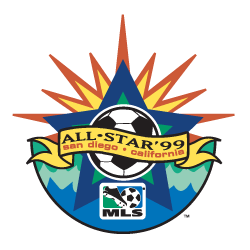
MLS Original Clubs and info (1996)
WESTERN CONFERENCE
Colorado Rapids
*Stadium: Mile High, Denver (MLS capacity: 17,500). Field size: 74 x 116 yards.
*Principal owner: Philip F. Anschutz.
*Coach: Bob Houghton.
*Top American players: Marcelo Balboa, Dominic Kinnear, Roy Wegerle, Chris Henderson, Jean Harbor.
*Top foreign players: Shaun Bartlett (South Africa), Khalil Azmi (Morocco)
Dallas Burn
*Stadium: Cotton Bowl (MLS capacity: 25,425). Field size: 74 x 116 yards.
*Principal owner: MLS.
*Coach: Dave Dir.
*Top American players: Mark Dodd, Jeff Cassar, John Kerr Jr., Brandon Pollard, Mark Santel.
*Top foreign players: Hugo Sanchez (Mexico), Leonel Alvarez (Colombia), Washington Rodriguez (Uruguay).
Kansas City Wiz
*Stadium: Arrowhead (MLS capacity: 30,554). Field size: 69 x 110 yards.
*Principal owner: Lamar Hunt.
*Coach: Ron Newman.
*Top American players: Mark Chung, Eric Eichmann, Frank Klopas, Matt McKeon, Chris Snitko, Mike Sorber.
*Top foreign players: Samuel Ekeme (Cameroon), Uche Okafor (Nigeria), Preki (Yugoslavia), Vitalis Takawira (Zimbabwe).
Los Angeles Galaxy
*Stadium: Rose Bowl (MLS capacity: 28,000). Field size: 72 x 110 yards.
*Principal owner: Marc Rapaport.
*Coach: Lothar Osiander
*Top American players: Dan Calichman, Robin Fraser, Cobi Jones.
*Top foreign players: Jorge Campos (Mexico), Mauricio Cienguegos (El Salvador), Eduardo Hurtado (Ecuador).
San Jose Clash
*Stadium: Spartan (MLS capacity: 19,166). Field size: 63 x 106 yards.
*Principal owner: MLS.
*Coach: Laurie Calloway.
*Top American players: Troy Dayak, John Doyle, Eric Wynalda.
*Top foreign players: Victor Mella (Chile), Michael Emenalo (Nigeria), Ben Iroha (Nigeria), Jorge Rodas (Guatemala).
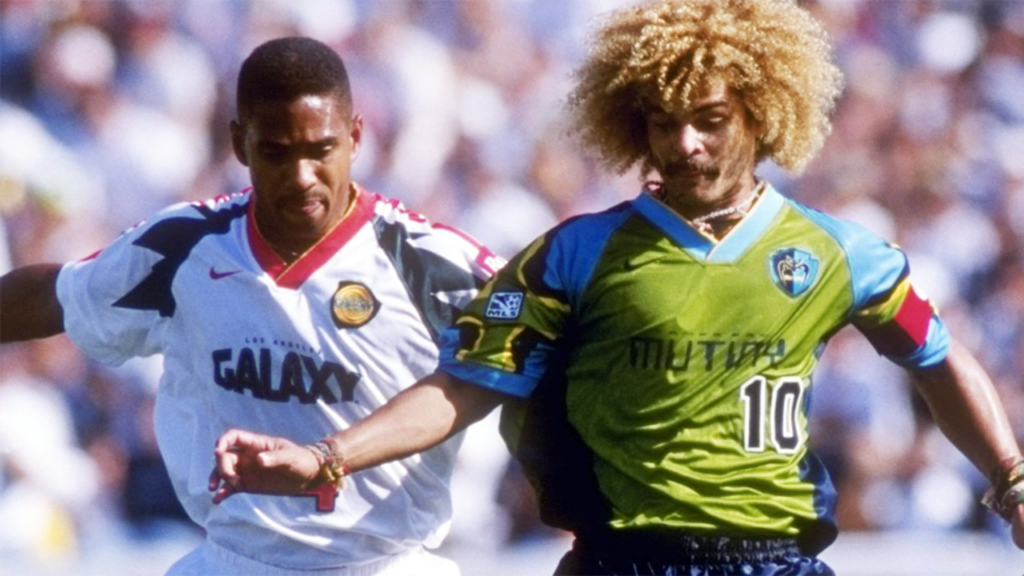
EASTERN CONFERENCE
Colombus Crew
*Stadium: Ohio (MLS capacity: 25,134). Field size: 62 x 106 yards.
*Principal owner: Lamar Hunt.
*Coach: Timo Liekoski.
*Top American players: Brian Bliss, Paul Caligiuri, Brian Maisonneuve, Brian McBride, Janusz Michallik, Billy Thompson.
*Top foreign players: Doctor Khumalo (South Africa), Adrian Paz (Uruguay).
New England Revolution
*Stadium: Foxboro (MLS capacity: 22,385). Field size: 72 x 116 yards.
*Principal owner: Robert Kraft.
*Coach: Frank Stapleton.
*Top American players: Imad Baba, Mike Burns, Jim St. Andre, Alexi Lalas, Peter Woodring.
*Top foreign players: Geoff Anger (Canada), Giuseppe Galderisi (Italy), Alberto Naveda (Argentina), Bojan Vukovic (Yugoslavia), Welton (Brazil).
New York/New Jersey Metrostars
*Stadium: Giants (MLS capacity: 25,576). Field size: 66 x 116 yards.
*Principal owners: John Kluge and Suart Subotnick.
*Coach: Eddie Firmani.
*Top American players: Tony Meola, Tab Ramos, Damian Silvera, Peter Vermes.
*Top foreign players: Nicola Caricola (Italy), Roberto Donadoni (Italy).
Tampa Bay Mutiny
*Stadium: Tampa (MLS capacity: 16,000). Field size: 68 x 116 yards.
*Principal owner: MLS.
*Coach: Thomas Rongen.
*Top American players: Mark Dougherty, Frankie Hejduk, Kle Kooiman, Roy Lassiter, Nelson Vargas, Martin Vasquez.
Top foreign players: Carlos Valderrama (Colombia), Evans Wise (Trinidad), Frank Yallop (Canada).
Washington D.C. United
*Stadium: Robert F. Kennedy (MLS capacity: 23,865). Field size: 72 x 110 yards.
*Principal owner: API Soccer.
*Coach: Bruce Arena.
*Top American players: Jeff Agoos, Jeff Causey, John Harkes, Mike Huwiler.
*Top foreign players: Raul Diaz Arce (El Salvador), Marco Etcheverry (Bolivia), Said Fazlagic (Bosnia), Mario Gori (Agentina), Juan Berthy Suarez (Bolivia).
MLS Highest Transfer fees paid (1996-2004)
*Luis Hernandez (MEX) – LA Galaxy, $ 4 million (2000)
*Landon Donovan (USA) – LA Galaxy, $ 3.5 million (2004)
*Ariel Graziani (ECU) – Dallas Burn, $ 2 million (1999)
*Marco Etcheverry (BOL) – DC United, $ 1.4 million (1996)
*Carlos Hermosillo (MEX) – LA Galaxy, $ 1.2 million (1999)
*Carlos Valderrama (COL) – Tampa Bay Mutiny, $ 1 million (1996)

